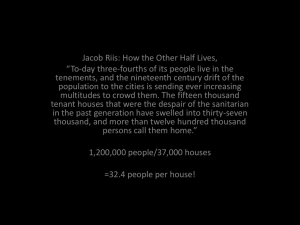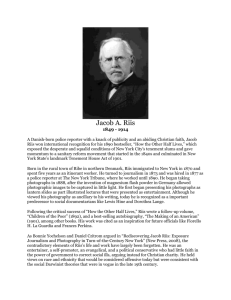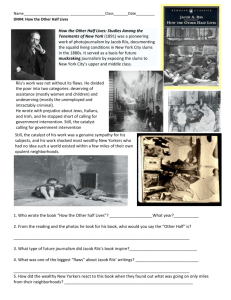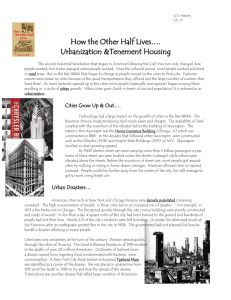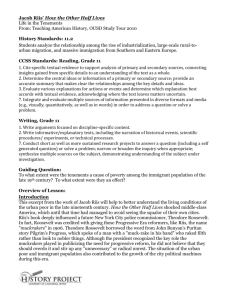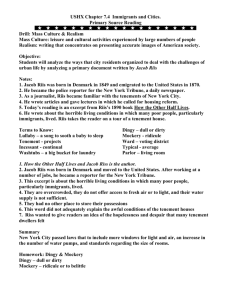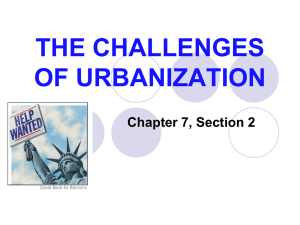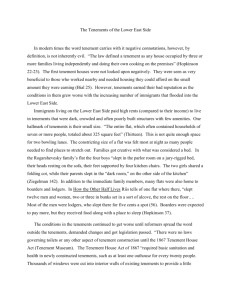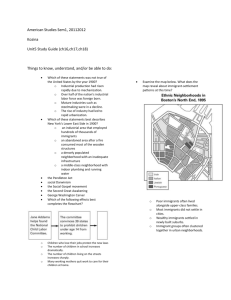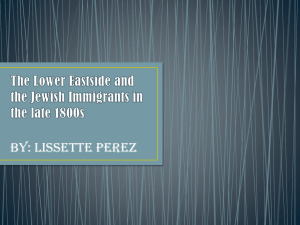Urbanization
advertisement
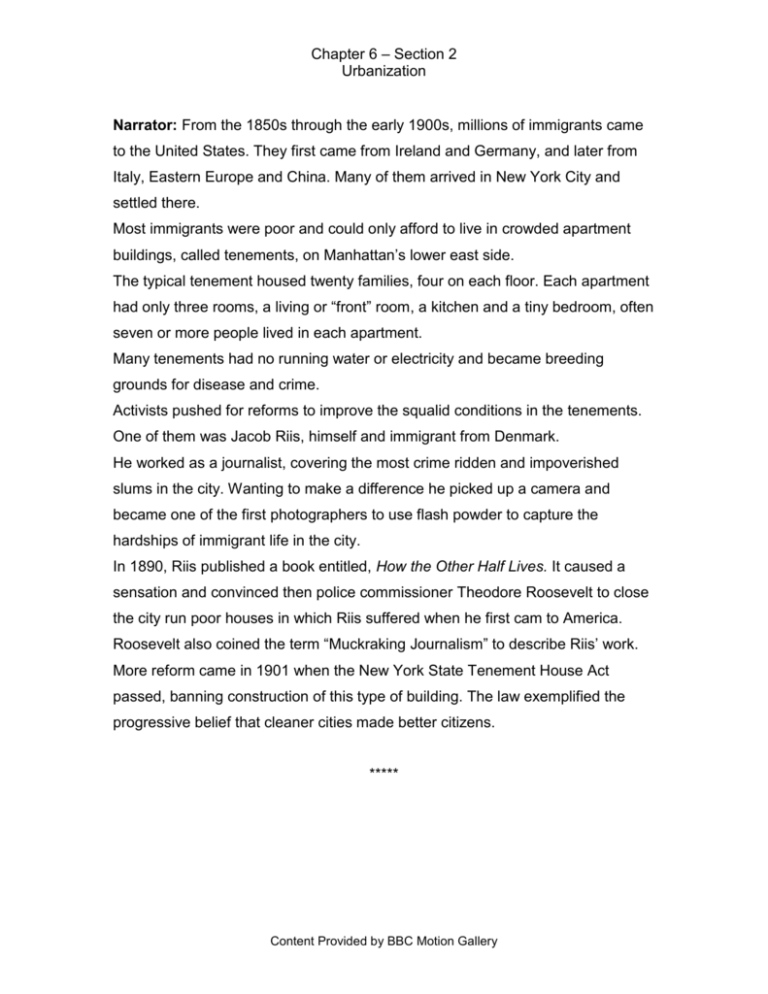
Chapter 6 – Section 2 Urbanization Narrator: From the 1850s through the early 1900s, millions of immigrants came to the United States. They first came from Ireland and Germany, and later from Italy, Eastern Europe and China. Many of them arrived in New York City and settled there. Most immigrants were poor and could only afford to live in crowded apartment buildings, called tenements, on Manhattan’s lower east side. The typical tenement housed twenty families, four on each floor. Each apartment had only three rooms, a living or “front” room, a kitchen and a tiny bedroom, often seven or more people lived in each apartment. Many tenements had no running water or electricity and became breeding grounds for disease and crime. Activists pushed for reforms to improve the squalid conditions in the tenements. One of them was Jacob Riis, himself and immigrant from Denmark. He worked as a journalist, covering the most crime ridden and impoverished slums in the city. Wanting to make a difference he picked up a camera and became one of the first photographers to use flash powder to capture the hardships of immigrant life in the city. In 1890, Riis published a book entitled, How the Other Half Lives. It caused a sensation and convinced then police commissioner Theodore Roosevelt to close the city run poor houses in which Riis suffered when he first cam to America. Roosevelt also coined the term “Muckraking Journalism” to describe Riis’ work. More reform came in 1901 when the New York State Tenement House Act passed, banning construction of this type of building. The law exemplified the progressive belief that cleaner cities made better citizens. ***** Content Provided by BBC Motion Gallery
